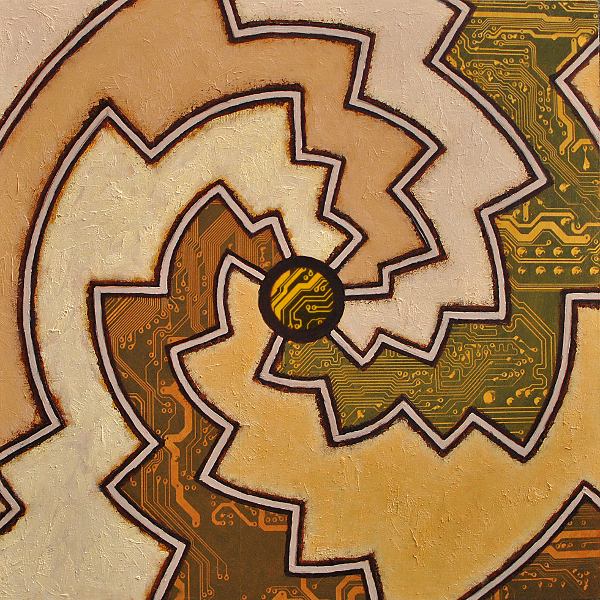
We have been up all night, my friends and I, beneath mosque lamps whose brass cupolas are bright as our souls, because like them they were illuminated by the internal glow of electric hearts.
F.T. Marinetti, “The Futurist Manifesto.” Le Figaro, February 20, 1909.
Anselm defined God as a being than which nothing greater can be conceived. This is never the case for the ultimate demitasse of espresso, known as the godshot. Occasionally a godshot is reported, a triumph of technique, technology, and nature. But mostly godshot suggests deferral, a perfection yet to come. Prospects of better gear, superior beans, purer metals, and more advanced knowledge fire the imagination of finer versions, an espresso to produce still more intense experiences of taste and stimulation, a truer sense of terroir and origins. It is just over there, and we can taste it. Espresso mediates, and is used to transform, the relation between subjective experience and the external world. The most valuable coffee bean ground for espresso, Kopi Luwak, is collected after being ingested and excreted by Indonesian civets. Now that’s a spiritual food, beans chock-full of inner life, and the potential of its expression.
Though the nomenclature of the godshot may be said to be mere semantics, semantics are rarely merely mere. The recent expansion of third-wave coffee conoisseurship and technologies, producing myriad new and reformed public shops and cafés (McCafé in the Golden Arched Holy of Holies), and ever more accoutrements for the home, is dramatic. In this short flight, I explore spirituality through espresso, as a history of exchanges between people and machines that brokered, adjusted and defined the relation between outer and inner, between external “things” and inner experience.
Coffee beans are, of course, the produce of a plant, not precisely a thing. They are even actors of a sort—enliveners, vivifiers, catalytic converters. Their origin legend tells of an Ethiopian goatherder boy named Kaldi who, in the tenth century (or eighth, or fourth, or seventh) first observed the excited behavior of his goats as they gnawed wild berries, and decided to try the same. The stimulating force of coffee was always a major part of its appeal, albeit in diverse ways, from its emergence in Ethiopia to its systematic plantation in Yemen to its global transport via the expansion of Islam and then the Ottoman Empire, to the arrival in Europe via Turkey in the hands of Venetian traders, to the first coffeehouses of Europe by the mid-1600s. Those seventeenth-century “penny universities” arrived just in time to help produce the public sphere, and to construct diagnoses of the secular that poured from the chatter over cups. Etymology presents a similarly global arc—English coffee from Turkish kahve, from Arabic gahwa, abbreviated from gahwat al-bun, “wine of the bean.”
The nominative tether to that more famously spiritual food, wine, is suggestive. Wine has a long pedigree as a thoroughly religious sort of drink, from Dionysian to Christian rites, and in metaphysics from the Symposium to the theory of transubstantiation. Roland Barthes called wine the totem-drink of France. Wine not only represented France the nation, it also converted its subjects into citizens. As a converting substance, wine miraculously extracts opposites from its object: youthfulness from the aged (as Socrates says), and boldness from the shy. Wine is of the earth, producing not only the bacchanal but also dreams and reverie, a theme addressed in depth by Bachelard. For some, wine’s spirituality has to do with its indigeneity, the inseparability of its identity from particular lands, as terroir. Other writers, like Michel Leiris, found in it the dread of the alloy, the blend, the complete interpenetration of one thing by another. Wine and water, like coffee and milk, can completely fuse, connoting the horror of the total breaching of boundaries and loss of identity, an unavoidable risk of conversion.
Other familiar ingestibles that modulate interior human experience in relation to the material world have been addressed in spiritual terms too. Fernando Ortiz’ masterpiece, Cuban Counterpoint, juxtaposed sugar and tobacco:
Page 1 of 4 | Next page